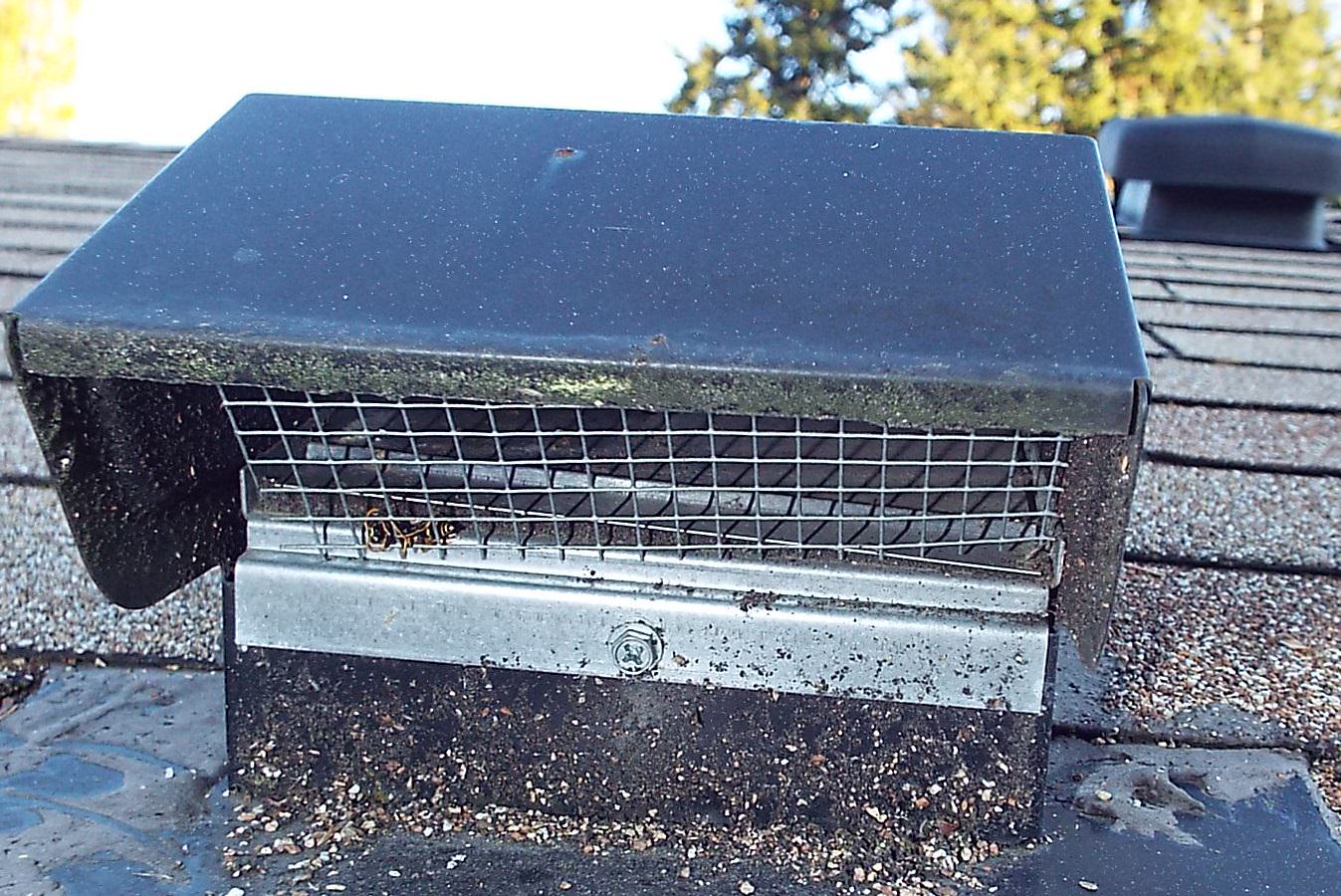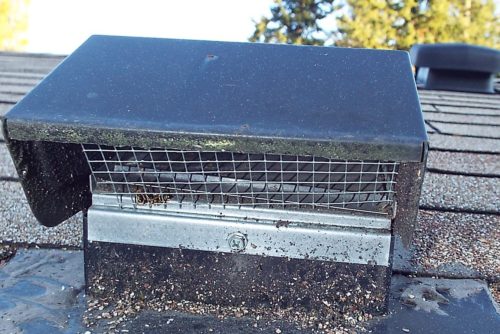
Most bathrooms have exhaust fans in them—or should.

Most modern codes (Washington State) require exhaust fans even if there is a window that can be opened. If we do not control moisture levels in our bathrooms, it can not only have a detrimental effect on the bathroom itself, it can also create moisture issues for the rest of the home. We all know how useful it can be to change the air in the bathroom even if water is not involved.
Who is going to open their window every time they take a shower when it is cold outdoors? Not me. If you were to do this, you might be surprised at how well it works to lower the humidity in the bathroom, even if it is cold and rainy outside.
Now that I have convinced you of the necessity for bathroom exhaust fans, we need to make sure they are working when we turn them on. Just because the thing shakes, rattles and rolls, does not mean that it pulling any air from the room. Simply turning the fan on is no test of its function.
There are many ways to determine if the fan is pulling any air; and many ways the function can be compromised.
1. The biggest way the function of these fans is compromised is that the user does not use them!
I know this is in the “DUH” category—but it is painfully true.
People need to be taught to turn these fans on, and to leave them on for a set amount of time. Typically I recommend that they be installed on a timer that can be set for various amounts of time and that after showering they be run for 60 minutes. This amount of time can be cut drastically if one raises the temperature in the bathroom itself before taking a shower. Air that is 75 to 80 degree F can contain a LOT of moisture—considerably more than 65 degree air. To the point, even without the fan running, the bathroom mirror may barely fog up if it is hot enough. If you raise the bathroom temperature to 80 degrees F, take your shower, then turn the exhaust fan on for 20 minutes, everything will likely be hunky-dorie in terms of adverse moisture conditions in the bathroom.
We have all taken hot steamy showers in cold bathrooms without fans and then have seen the condensation on the mirror and walls. This can be very damaging to the home (especially modern tight houses), promoting mold/fungal growth on the wetted surfaces. Most bathrooms do not have a “localized” means of heating the bathroom previous to taking a shower, making this not an option. In that case it is best to run the fan the entire time you are showering and for an hour afterwards—assuming the fan is functioning properly.
2. The fans are so noisy they do not get used.
Yes, if every time you take a shower you have to listen to the roar of a jet engine, or feel the house being shaken apart, or make the neighbors complain, there is a good chance the fan will not be used at all.
3. There is no space under the bathroom door.
Many times I see bathroom doors so tight against carpeting that no air can be pulled in under the door to replace the air that the fan is attempting to exhaust. Again, with this installation, no/not enough moist air is removed from the room, making the fan non-functional.
4. There is something restricting the flow of air from the fan to where it terminates at the exterior.
This can be caused by many things—things your home inspector will be looking for. Perhaps the fan motor is running but the squirrel cage has lost its squirrels. Perhaps the damper in the fan unit is stuck closed. Perhaps the vent pipe is crushed, or the end of the vent pipe or outlet of the unit itself is covered with insulation. Perhaps the vent cap damper at the exterior is stuck–maybe blocked with wasp’s nests, paint, debris or other restrictions. Maybe the missing squirrels are living in the vent pipe.
So how does a homeowner test to see if the fan is functional?
Well of course there is sophisticated testing equipment that can be used, but there are less scientific means of determining some degree of function.
1. The paper test.
The paper test can be done on the unit itself—all openings of the fan unit should be fully covered however. Covering only a portion of the opening may not tell you that the air is moving into the unit and then right back out the uncovered part of the cover. If the fan is too high to get to, or the cover is too complicated to cover, you can place the tissue paper right along the bottom edge of the bathroom door on the floor. If the tissue scoots across the floor when you turn the fan on, all that air is going somewhere—and shows that the fan is moving air. (As a side note, if the fan is running and forcefully holding the tissue paper in place, this is a good time to close the bathroom door if it is open. All of these tests should be done with the bathroom door closed and because if the tissue paper falls off or starts to fall off you will know you have inadequate clearances under the door.)
2. The wet finger test.
If you don’t have any tissue paper you can use the wet finger test. This is kind of like testing to see which way the wind is blowing. You will feel your finger get colder as air is pulled under the door and attempts to dry your finger. If you feel a good draft with a dry finger, that is an even a more confirming test.
3. The business card test.
If you don’t have a wet finger (it is surprising how resistant people can be to putting their fingers in their mouth) or tissue paper, you can stand up a business card on the floor up against door. It should tip over when you turn the fan on.
While not very scientific, these methods of testing will give you some general information as to function of the fan—at least enough to tell you whether it might be a good idea to have the vent evaluated further. For the best results with this “testing,” make sure that windows are closed during testing and throw a towel or rug over the forced air heat register. These openings can affect how much air is moved from the room—especially the window (The ductwork typically has so much friction losses that it is not often a factor).
Now go back and look at the picture at the top of the post. Can you predict, based on the picture, whether the bathroom exhaust fan moved any air from the room?
Perhaps not so obvious, the screen is keeping the damper closed.
By Charles Buell, Real Estate Inspections in Seattle
If you enjoyed this post, and would like to get notices of new posts to my blog, please subscribe via email in the little box to the right. I promise NO spamming of your email! 🙂